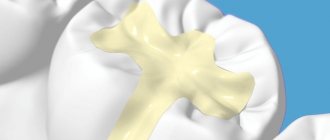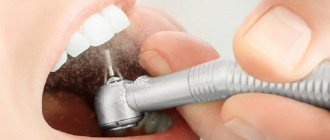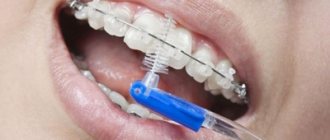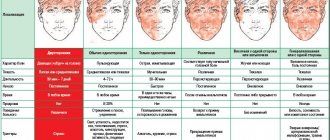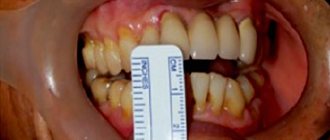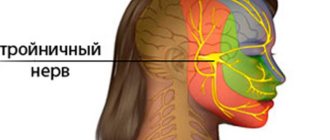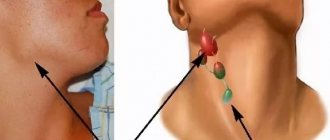Explanation of the word “depulpation”
Probably everyone knows what dental diseases are. There are many reasons for such pathologies. They can arise due to a simple lack of adequate oral care or due to a hereditary factor. Here we will talk about what problems can appear in a pulpless tooth. First of all, the term “pulpless tooth” itself should be deciphered. This is the name of a tooth without pulp. It contains several components:
- nerve;
- connective tissue;
- blood vessels;
- lymphatic vessels.
Even a tooth without a nerve can hurt
A layman may be perplexed by the very fact that a tooth without a nerve can hurt. But the specialist does not see anything out of the ordinary in this circumstance.
Something to keep in mind ! If a tooth hurts without pulp, it is often impossible to cure it. All that remains is to delete.
Causes of pain in a pulpless tooth under a crown
The influence of the following reasons cannot be excluded.
| Cause | Description |
| Root canal not filled to its full length | There is no more pulp in the tooth, but a small section of the canal is still not sealed. As a result, infectious diseases and periodontitis develop under favorable conditions. |
| Uncompacted gutta-percha | Gutta-percha is a material used to fill teeth. In some cases, careless blockage also causes pain. Both also leave fertile ground for the development of periodontitis |
| Tooth decay under the crown due to perforation of the root canal | This is the result of a dental error. The hole could have arisen due to a tool entering the channel wall. Most often this happens when the doctor installs a pin. |
| Instrument breakdown, non-compliance with asepsis rules | Because of both, inflammation occurs. Most often, such troubles happen if the procedure is performed by an inexperienced doctor. |
A pulpless tooth under a crown can also hurt
Holes in the root canals or poor filling, as well as particles of instruments remaining in the tooth can be noticed by taking an x-ray.
Video - Doctor about the causes of pain in a pulpless tooth
Causes of pain after nerve removal
A tooth hurts after pulp removal for the following reasons:
- the inflammatory process has begun;
- untreated pulpitis, in this case pathogenic microflora penetrates the periodontium;
- the nerve is not completely removed, and sensitivity remains;
- the channels are sealed poorly;
- It is not the pulpless tooth that hurts, but the one nearby;
- the gums hurt, the patient cannot correctly determine the location;
- pain is the body’s reaction to the procedure of nerve amputation and canal filling, in this case the situation is not dangerous;
- sometimes pain occurs due to the patient’s individual reaction to the filling material;
- wrong treatment.
Characteristics of the symptom
The fact that a person feels pain in a pulpless tooth even with the slightest pressure is not something unusual. Doctors consider the pain that the patient is able to tolerate without painkillers to be normal. But rapidly growing pain at the site of depulpation means an incorrect procedure.
Pain in the dead nerve is excluded. However, not completely removed, it can be very painful. Only the doctor who performed the depulpation can correctly find out where the pain came from.
If the nerve is not completely removed, the person will suffer pain
If pressing on the area where the procedure was performed causes tolerable pain, it is best for the patient to take an analgesic. Little by little the pain will go away, and then the person will feel better. This will allow us to say with confidence that no medical error occurred and the patient has fully recovered.
Important ! The persistence of pain is a good reason to repeat the cleaning of the dental canals, as well as to then seal them.
Causes of pain in a pulpless tooth
Such a place can be very painful due to careless removal of the nerve. Then the sensitivity of the tooth does not decrease.
Constant pain may remain due to incomplete filling of the canals. Then they need to be opened and sealed again.
Quite often it happens that pain is felt not in its true source, but in a neighboring tooth. Then it is much more difficult for the doctor to correctly determine which tooth is causing the discomfort.
Sometimes it is difficult to determine the location of pain
Important ! It also happens that the gums are affected. The tooth feels like it hurts, but in fact the source of the pathology lies in the gum nearby. It can be damaged by one or another accidental action of a specialist during dental treatment.
Pain can also be caused by a specific reaction of the body to the process of depulpation and filling. This kind of thing is safe.
Such sensations may well be caused by the use of incorrectly selected filling materials.
Which filling material is best?
Causes of pain when pressing on the area of a pulpless tooth
Sometimes pain in a pulpless tooth can be caused by careless treatment, which is dangerous to health. To eliminate this, as well as to repeat the cleaning and re-sealing, you need to make an appointment with the dentist again.
If the doctor performed the procedure incorrectly, there is a high probability that after it the person will suffer from severe pain.
Pain on impact
A cracked tooth is known to cause pain when chewing something hard, such as an apple or raw carrot. If there are cracks, it is noticeable immediately, and precisely because of such sensations. However, there are situations in which a pulpless tooth hurts, but there are no noticeable problems from this. Sometimes a tooth with a filling hurts for three or four days, and then it stops. After this time, you can think about whether it is worth contacting the dentist again.
If there is a crack in a pulpless tooth, the person will most likely feel pain when eating solid foods
How to get rid of pain
Depending on the cause, the following treatment is carried out for a pulpless tooth:
- Incomplete removal of the nerve - vital depulpation under anesthesia, repeated filling;
- Poor quality canal filling - unsealing, root cleaning, re-filling with gutta-percha, X-ray control, temporary and then permanent filling;
- Periodontal inflammation – medications and professional teeth cleaning are prescribed;
- Carious lesion under the prosthesis - the structure is removed, the diseased organ is treated or removed, then a crown is installed or implantation is performed.
Typically, pain after depulpation is a normal reaction of the body to removal. Complications do occur, but modern equipment and treatment under a microscope are gradually reducing the percentage of negative consequences of treatment.
An organ without pulp becomes less durable over time, susceptible to caries, and darkens. If you make the right choice after treatment in favor of fissure sealing, microprosthetics, or crown installation, the organ becomes less sensitive to external stimuli. The secret to the long life of a pulpless tooth lies in the qualifications of the doctor. If the dentist cleaned the root canals well and filled them completely with filling material, then the organ will not change for a long time.
How to smell something wrong if the prosthetics were done poorly
It is possible that pain will not be the only consequence of dental prosthetics. Here are the features that can complement the picture:
- flux;
- enlargement of the submandibular lymph nodes;
- increase in body temperature.
The pain can be continuous or associated with chewing food or exposure to temperature.
A periodontal abscess (an inflammatory lesion usually located at the top of the root canal) is characterized by the accumulation of pus under the crown. The pain in this case is due to the fact that this pus bursts the tissue. At first the pain is mild, but inaction here guarantees that it will increase. Then the pain becomes constant, and gumboil forms around the tooth. That is, the cheek swells.
A periodontal abscess may occur due to an incorrectly performed procedure.
When a tooth rots under the crown, a fistula may well appear. Its formation begins with the appearance of a hole with pus in the gum. This happens as a result of a decrease in the functioning of the immune system and the subsequent exacerbation of periodontal abscess. When the gums and cheeks swell, pus breaks through the bone, and the resulting thin passage is precisely the fistula.
As soon as this happens, the pain goes away. The person swallows the pus with saliva, and the swelling decreases. But as soon as the fistula closes, everything starts all over again, including pain.
Important ! If chronic periodontitis is particularly severe, a cyst appears, that is, a cavity lined with a fibrous membrane in the dental bone, heavily clogged with pus. Its occurrence is caused by inaccurate filling of the root canals of the tooth.
It is possible that the cyst does not provoke any symptoms for a long time, or that it immediately causes severe pain. Most often, the cyst grows slowly and only after it grows to a certain size does it cause acute inflammation.
Previously used treatment methods
The development of dentistry has recently ended a long period of stagnation. Because of this, people are accustomed to the fact that dental treatment causes severe pain. And in order to remove the nerve, I had to visit several doctors’ offices, which was also not so convenient. Before removal, the diseased nerve was exposed, and arsenic was placed in the mouth, intended to kill this nerve.
The procedure was made more effective by temporary fillings, applied for a maximum of a couple of days, and exceeding this period was dangerous, since it was fraught with periodontitis. After waiting the required period, the doctor removed the filling and the dead nerve, then treated the teeth with a special antiseptic, after which he applied a permanent filling.
If previously the process of dental treatment was long and frightening, now everything is quick and painless
And now depulpation is carried out in just a few minutes, during which the doctor kills the nerve, cleans it and puts a filling. And all this under local anesthesia, which completely eliminates pain from the procedure. If, a year after depulpation, the tooth hurts again, you need to contact the dentist again so that he can carefully and without much time spend a second depulpation.
Important ! In dental diseases, the symptoms include not only pain, but also, for example, swelling of the corresponding gums, a reaction to cold or hot food.
Possible complications
If, after removal of the nerve, severe pain occurs and the discomfort increases every day, this is often due to complications that have begun.
After the filling procedure, most patients experience discomfort or soreness for 4 or 5 days. After this period, all unpleasant sensations should completely disappear. Therefore, dentists consider this situation to be the norm, and patients are advised to take some mild painkillers during these days. It could be Ketanov, Nurofen, MIG or Nise.
Ketanov
Nise
If the pain intensifies every day, it means that the depulpation was performed poorly by the doctor or the intervention was carried out using the wrong method. After depulpation, the missing nerve cannot cause such unpleasant sensations. Severe pain occurs only when the nerve process is incompletely removed. Or in the case when the dentist left part of the instrument in the canal (this also happens). The video below shows how to get rid of pain for this reason:
When a patient can endure pain that occurs after dental surgery, the doctor recommends using an anesthetic to relieve pain, which is selected based on the health characteristics of a particular patient.
If a person feels good after taking the prescribed drug, then the dentist performed the depulpation correctly. When the pain does not go away, an x-ray, repeated cleaning of the canals and a new filling can correct the situation. Otherwise, an inflammatory process may begin, which can lead to complete tooth loss.
Larisa Kopylova
Dentist-therapist
If you do not contact a dentist in time, who will remove the filling, clean the canals and fill them again, and then prescribe a course of drug treatment, then the consequences can be very sad.
Often, not only a poorly pulped tooth is treated, but also the gum area next to it. To do this, various drugs relieve the inflammatory process in this area. Healing of the treated gum takes place over 3–5 days. During this period, the patient should not eat solid foods, otherwise the process will take 2–3 weeks.
Procedure for nerve removal
What measures to take?
If the pain is too severe, you need to visit the dentist as quickly as possible, who will help you find out the cause. If he decides that the cause of the pain lies in the body’s reaction to the filling, additional therapy will be prescribed, and more specifically, the use of anti-inflammatory drugs. Thanks to this, the patient recovers much faster.
Your doctor may prescribe anti-inflammatory medications
If the pain is the result of improper depulpation and poorly sealed canals, the therapy is more complicated. And most often it lasts a long time.
ethnoscience
In the case of mild but gradually decreasing pain, alternative therapy is acceptable. Before using various folk remedies, you should consult your doctor. If he approves the use of traditional medicine, it may be beneficial in getting rid of the remaining inflammation.
Here are simple and effective recipes:
- take fresh juice of Kalanchoe leaves or, alternatively, angelica root, moisten a cotton ball with it, and apply to the gum for ten minutes. If necessary, do the same several times every two to three hours;
- put a mixture of chamomile and elderberry flowers in a 1:1 ratio in a small gauze bag, which is then applied to the tooth and gum;
- take one and a half to two tablespoons of St. John's wort per glass of boiling water, make an infusion. Moisten a cotton wool with it and apply it to the sore spot. Dilute part of the infusion with water in a 1:1 ratio;
Traditional medicine can relieve pain
- make an infusion: 50 g of birch buds, which will be about four to five tablespoons, for half a liter of vodka. Everything should be infused in a warm place for ten days. This tincture can be prepared for future use. Usage: moisten a cotton swab with tincture, apply for ten minutes;
- pour a couple of tablespoons of finely chopped oregano into 300 ml of sunflower oil, let stand for 8 hours, then strain and squeeze. Moisten the cotton wool and press it onto the sore spot;
- Make a decoction of snake rhizome in the proportion of a tablespoon to a glass of boiling water. The result is to rinse your mouth;
- make a decoction of oak bark in the proportion of 6 tablespoons per liter of water, add a couple of tablespoons of sage leaves at the end of boiling. The recipe is intended for mouth rinses;
- take an equal number of sage leaves and chamomile flowers, or, alternatively, one of these plants. Prepare an infusion, keeping the proportion of a tablespoon of each plant per glass of water. This product is also a mouth rinse.
You can use pharmaceutical chamomile, sage
Attention ! If the pain has become easier or even gone completely, this does not mean that the tooth is now completely healthy. With all the advantages of traditional medicine, if you have a toothache, you still need to immediately consult a dentist.
Only trusted doctors can guarantee the absence of excessive pain after depulpation, as well as careful compliance with all their recommendations, and especially the requirements during the rehabilitation period. But if discomfort occurs, you should visit the doctor again.
Antibiotics
If there is no positive result when using other drugs, the doctor prescribes a course of antibiotics. Of these, Lincomycin is most often used in dentistry. This remedy is useful if, during filling, pathogenic bacteria have entered the tooth cavity and this has caused inflammation. Even if antibiotics are powerless, only a last resort can help, which is opening the filling and cleaning the tooth again.
"Lincomycin"
What happens when you don't take proper care of your teeth?
Not so long ago, dentists immediately removed a painful pulpless tooth. Then complaining of pain in a tooth that lacked a nerve meant losing it. Doctors did this due to the complete lack of technology to correct the matter and cure the tooth. But now the equipment of dental clinics is at a level high enough to remove fillings and re-carry out treatment procedures. Science is also looking for other treatment methods related to therapy and surgery. A timely visit to a good dentist will dramatically increase the chances of saving such a tooth and getting rid of pain.
Even if there is no external damage, if there is discomfort, you should consult a dentist
Important ! Even if the teeth do not appear to be damaged at first glance, the need for proper care and visits to the doctor does not go away. Teeth should be protected to prevent caries and subsequent depulpation.
According to dentists, pulpitis and periodontitis are two of the reasons for pulp removal. But these two diseases do not appear if you are regularly examined by the dentist and do not develop caries.
Why does a tooth react to hot and cold after nerve removal?
It would seem that the tooth is cured, the nerve is removed - and you can forget about the pain. However, even when the dentist has carried out the treatment fully and correctly, pain sometimes persists. Read more about why a tooth hurts under a filling here.
Causes of pain in a tooth with a removed nerve:
- the nerve was not completely removed. This is possible if the dentist is not very experienced, or the patient has a non-standard tooth structure with an atypical number of tubules or their thin lumen, as a result of which it becomes very difficult to clean them completely;
Incomplete removal of the nerve can lead not only to pain, but also to further infection of healthy tissue.
- residual post-filling phenomena. Removing a nerve with subsequent filling of a tooth is a fairly serious dental procedure, during which even the most experienced doctor will not be able to do without mechanical irritation and injury to the gums. When the anesthesia wears off, sensation in these tissues returns and pain may occur while they heal;
- the maxillary or mandibular nerve is damaged - a branch of the so-called trigeminal nerve, which provides sensitivity and mobility of most of the tissues of the face and oral cavity. Characteristic signs of such damage are sharp acute pain when chewing and biting, localized around the tooth with a filling;
- If, along with the removal of the nerve, the diseased tooth was not thoroughly treated for caries, or the canals were poorly sealed, then inflammation of the gums may appear near the tooth or in the jaw bone. It takes time for such an infection to develop, so pain in a tooth without a nerve for this reason can occur months and even years after the filling is installed;
- The filling does not match the bite. Sometimes, under the influence of an anesthetic drug, the patient is unable to fully feel how comfortable he is with the new filling, and as a result, the doctor cannot adjust it to the exact size. And when sensitivity in the oral cavity returns, such a filling can put pressure on the remaining teeth or soft tissues, causing pain and sometimes even injuring them;
- failure to comply with hygiene rules. A tooth without a nerve is more fragile and susceptible to developing internal caries. Read more about how to recognize hidden caries in this article. Therefore, if a patient neglects regular teeth cleaning, does not treat gum disease and tartar on adjacent teeth, then inflammation most often develops in the area of the tooth without a nerve. He himself can no longer feel anything, but the tissues of the gums and jaw bones retain sensitivity, so it may seem that it is the tooth that hurts;
- allergic reaction to filling materials. This happens very rarely in practice - now in dentistry everything is made from hypoallergenic materials that are compatible with human tissue. However, the possibility of individual intolerance cannot be completely ruled out. Other allergy symptoms will help confirm this diagnosis - itching and rashes on the face, swelling of the soft tissues in the oral cavity.
It may not actually be the sealed tooth that hurts, but the neighboring one, where the nerve is preserved. Sometimes it can be difficult for a person to localize painful sensations.
A good dentist will keep your teeth strong and healthy.
There are a lot of nerves along the entire length of the tooth canals. Because of this, each impact leads to very severe pain. But even this does not force many to treat caries as soon as it begins to develop. Later, people wonder why pulpitis grows out of caries.
Important ! Self-medication is strictly contraindicated here unless there is a desire to make your own condition even worse. Arsenic paste, for example, cannot be used here at all: the wrong approach will provoke complications and pain that will make it impossible to live a full life. But if you consult a doctor, he will prescribe just such a course of treatment, which will not take much time, and most importantly, will be effective.
If the doctor did everything correctly, the pain will go away after a couple of days
With the correct actions of the dentist, the pain lasts two to three days. If the pain does not go away after this time, it means that some kind of inflammation has begun in the filled tooth, and specific treatment may be needed to get rid of it. Here it is important to observe the duration and nature of the sensations. If they do not go away within two or three days or begin to increase, you need to go to the doctor again.
Expert recommendations
The first stages of the depulpation procedure are:
- anesthesia;
- opening of soft tissues;
- removal of nerves;
- filling open canals.
It is important to follow the recommendations of a specialist
After the doctor applies a permanent filling, the treatment can be considered complete. In this case, pain should not occur. But a tooth from which the nerve has been removed may well hurt. This can be easily explained: this is how the body responds to outside interference. It also happens that along with tooth pain comes swelling and migraines. There are several useful tips to combat them:
- The most effective way to help here is to take medications. But it is better to resort to it either immediately after removing the pulp, or on the day on which this procedure was carried out;
- Solutions intended for mouth rinsing can help against discomfort. These products are very easy to prepare, allowing you to prepare them at home. Here is a good example: dissolve a teaspoon of salt and 4 drops of iodine in a glass of boiled water;
- By applying propolis to the source of pain, you can achieve a good result.
You can use various decoctions for rinsing, tinctures, medicines
The duration of pain exceeding three days indicates that either the individual characteristics of the body lead to it, or the depulpation was carried out incorrectly. In the second case, inflammation may appear in the filled tooth.
Important ! The only way to relieve inflammation is to refill and re-clean the canals.
Why does a tooth hurt after root canal treatment?
If the pain persists for a long time after filling the canals, this indicates that the dentist made a mistake during treatment. The main reasons for the manifestation of such unpleasant sensations are several problems.
Penetration of excess filling material beyond the root
Before filling the cavity formed after removal of the pulp and nerve, the doctor determines the length and width of the canals. If the parameters are incorrect, too much material is added, and it is squeezed out beyond the root tip into the soft tissue, which leads to inconvenience.
Unfilled tooth
In this case, pain may not occur immediately after treatment, but after a long time. The problem is incomplete filling of the canals; microbes penetrate into the voids left, the vital activity of which leads to inflammation, the formation of cysts and granulomas.
Breaking off an endodontic instrument
When working in narrow canals, damage to the metal rod may occur, causing the fragment to remain inside the tooth unnoticed. The reason for this is strong pressure, improper operation, lack of gel lubricant used to avoid “jamming” or the unsuitability of the equipment due to the length of use.
A foreign object limits access to the root apex, causing nerve fibers to remain there. Or it does not allow filling the entire cavity, and infection subsequently develops successfully in the remaining voids.
Damage to the tooth wall with an instrument
Actions in the canals are performed manually or using mechanical tips. Tooth perforation can occur if a rapidly rotating working part does not follow the actual curvature of the object, i.e. The tool drills directly into the wall.
Incorrectly selected equipment brings the same result. In this case, injury is caused to soft tissues. As a result, a hematoma forms in this place; when an infection occurs, inflammation and suppuration begin. And when filling through a hole, the hardening composition penetrates beyond the root, which is again accompanied by prolonged toothache.
Allergic reaction to material
If after treatment there is swelling of the gums that does not subside for several days, as well as swelling of the lips or cheeks, pain in a dead tooth that increases with pressure while eating, all this indicates the presence of an allergy to some component of the filling.
This is especially pronounced when the material comes into direct contact with the gum (during perforation of the canal or squeezing out the composition). Sometimes the pain reaches such a degree that it becomes unbearable to endure. In this case, it is necessary to refill the tooth with an alternative component.
After removal of the nerve and pulp, it is natural to experience pain for some time. However, if it continues for too long, it is worth contacting a specialist again to identify the cause of the ailment and eliminate it.
Reviews about depulpation
Many people are familiar with the depulpation procedure. And yet reviews say that it usually causes pain, which very soon disappears on its own. In this case, inflammation does not begin so often. For most people who have undergone this procedure and published their opinions about it, the pain subsided within a day or two, given the use of drugs designed to combat it.
Most often, after depulpation, people experience pain, but it goes away after a short period of time

